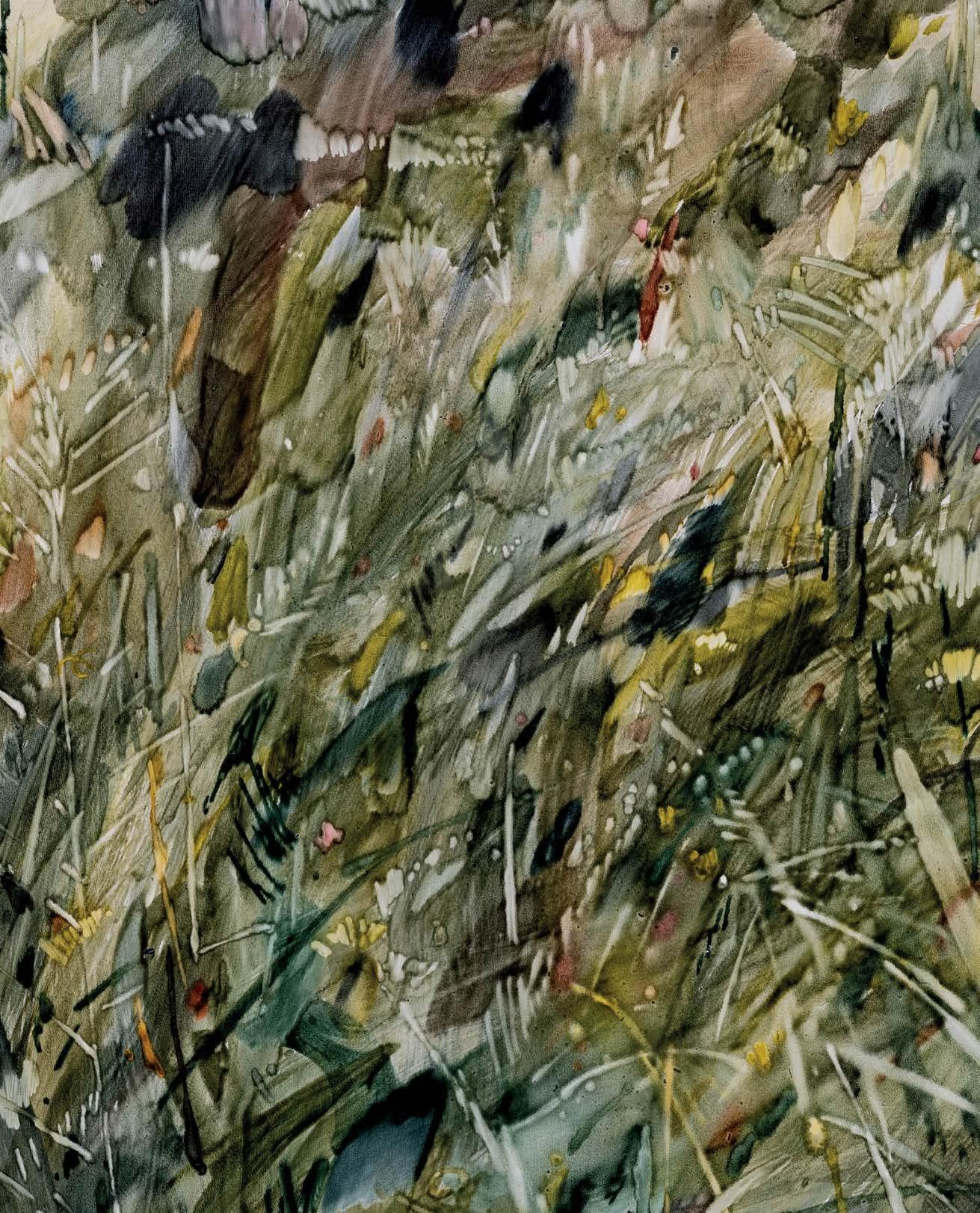
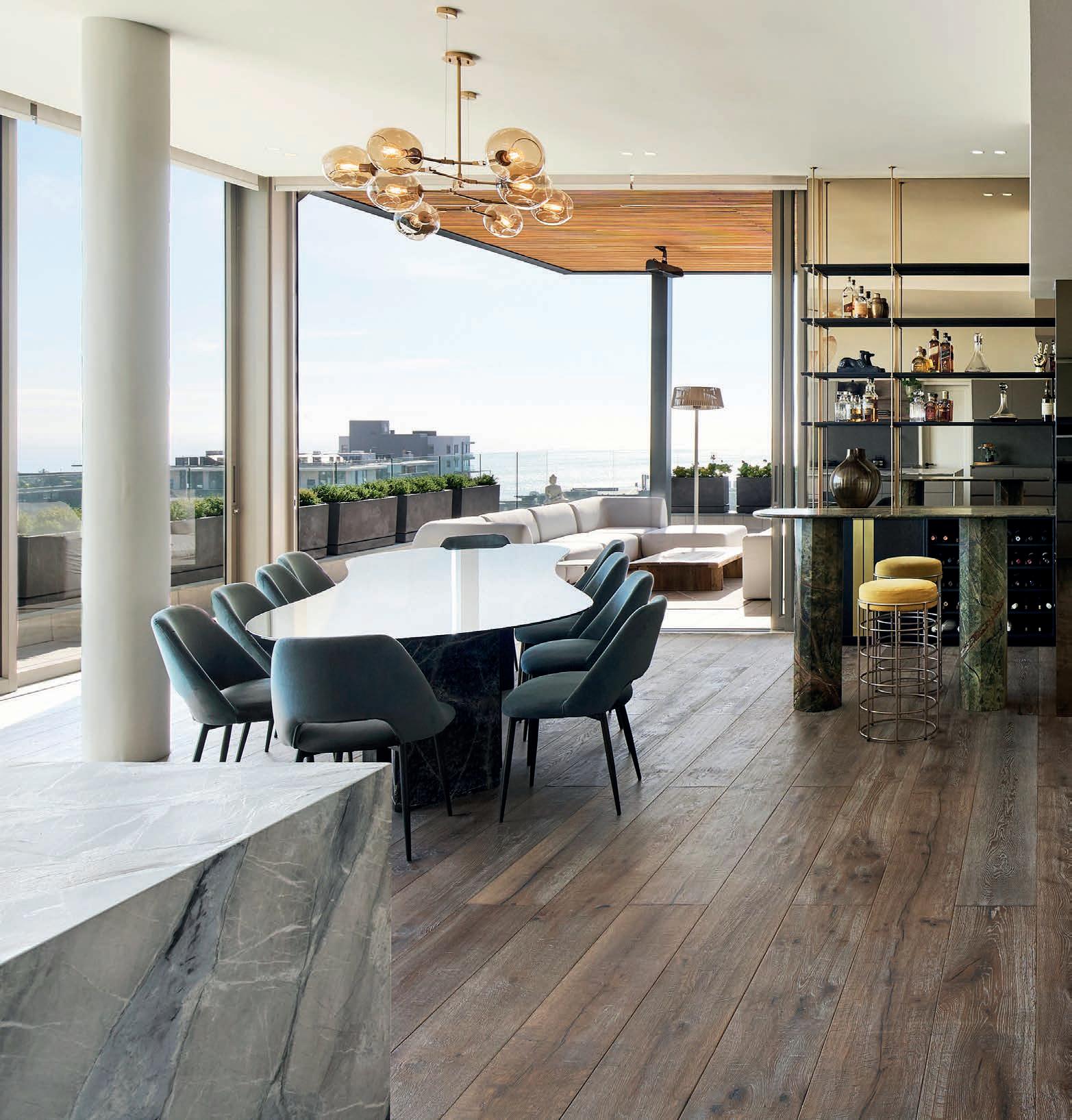
....hand-chiselled oak floors in modern apartments.
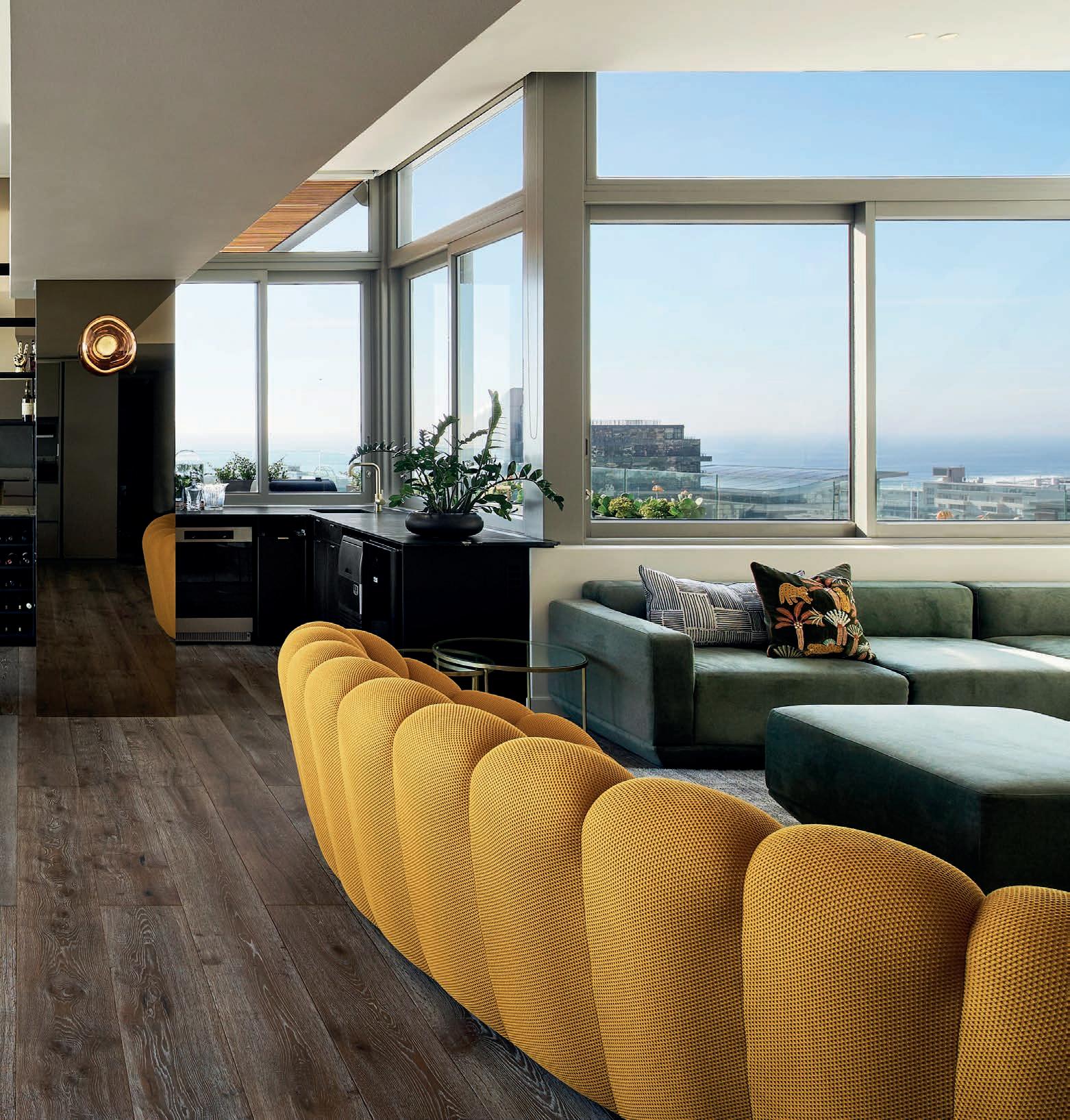
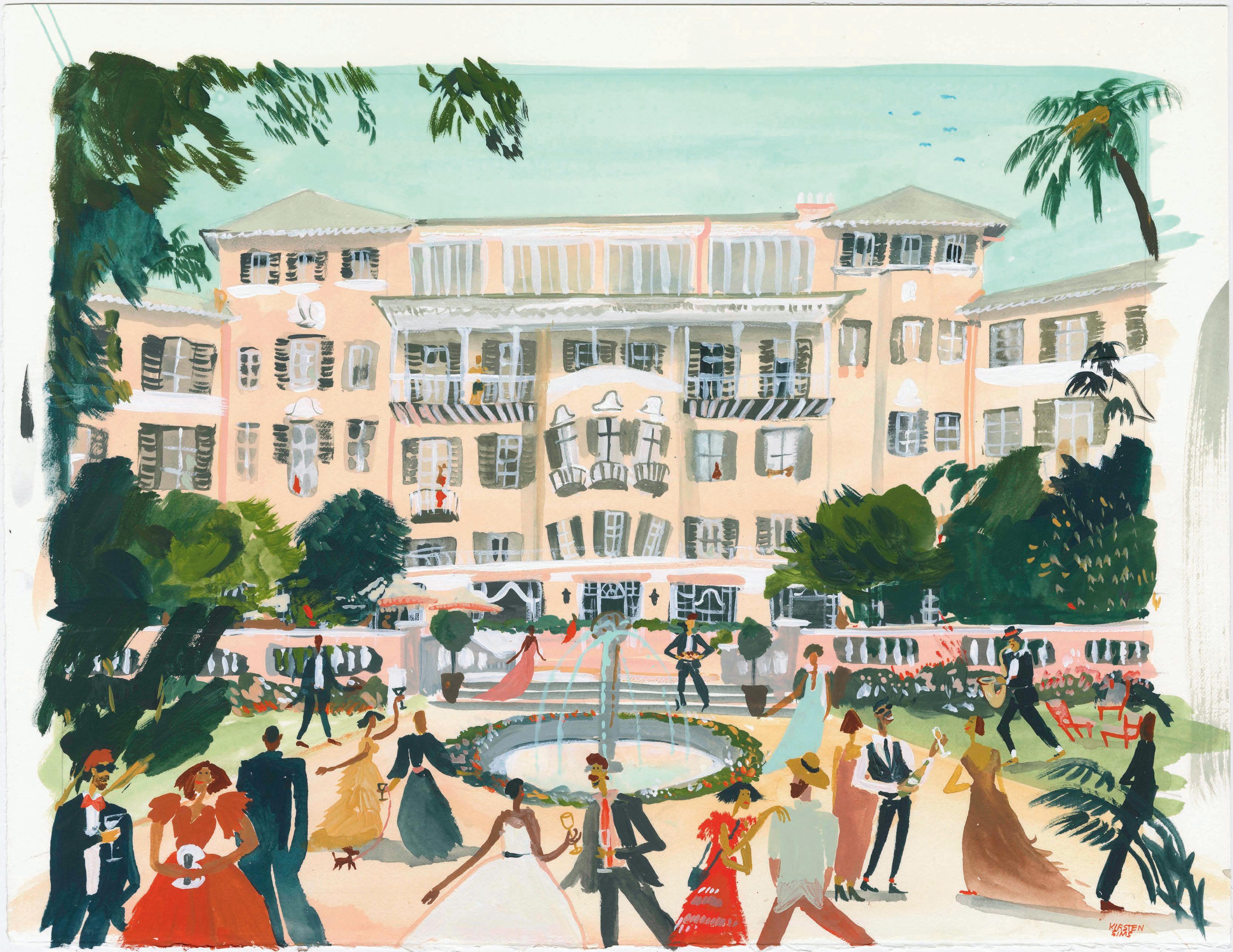
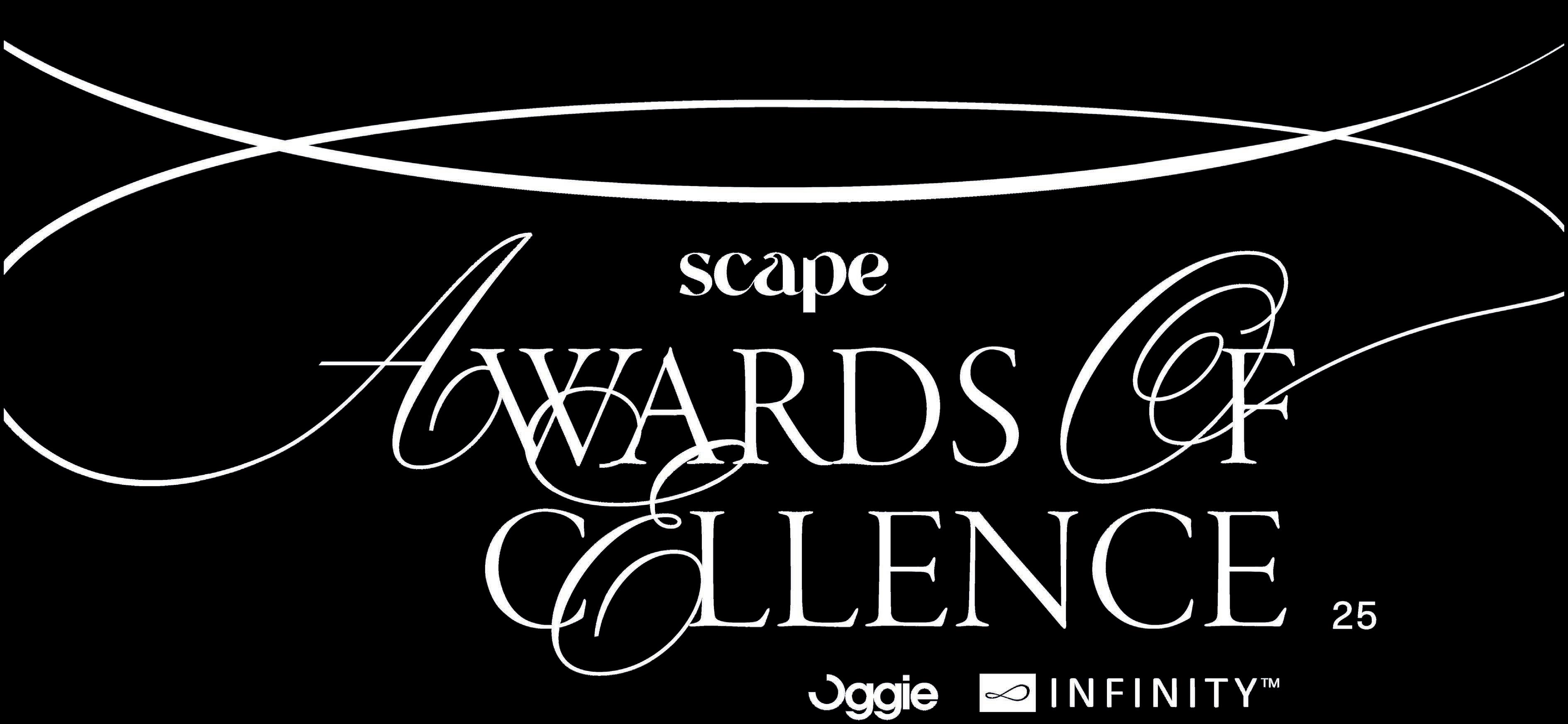



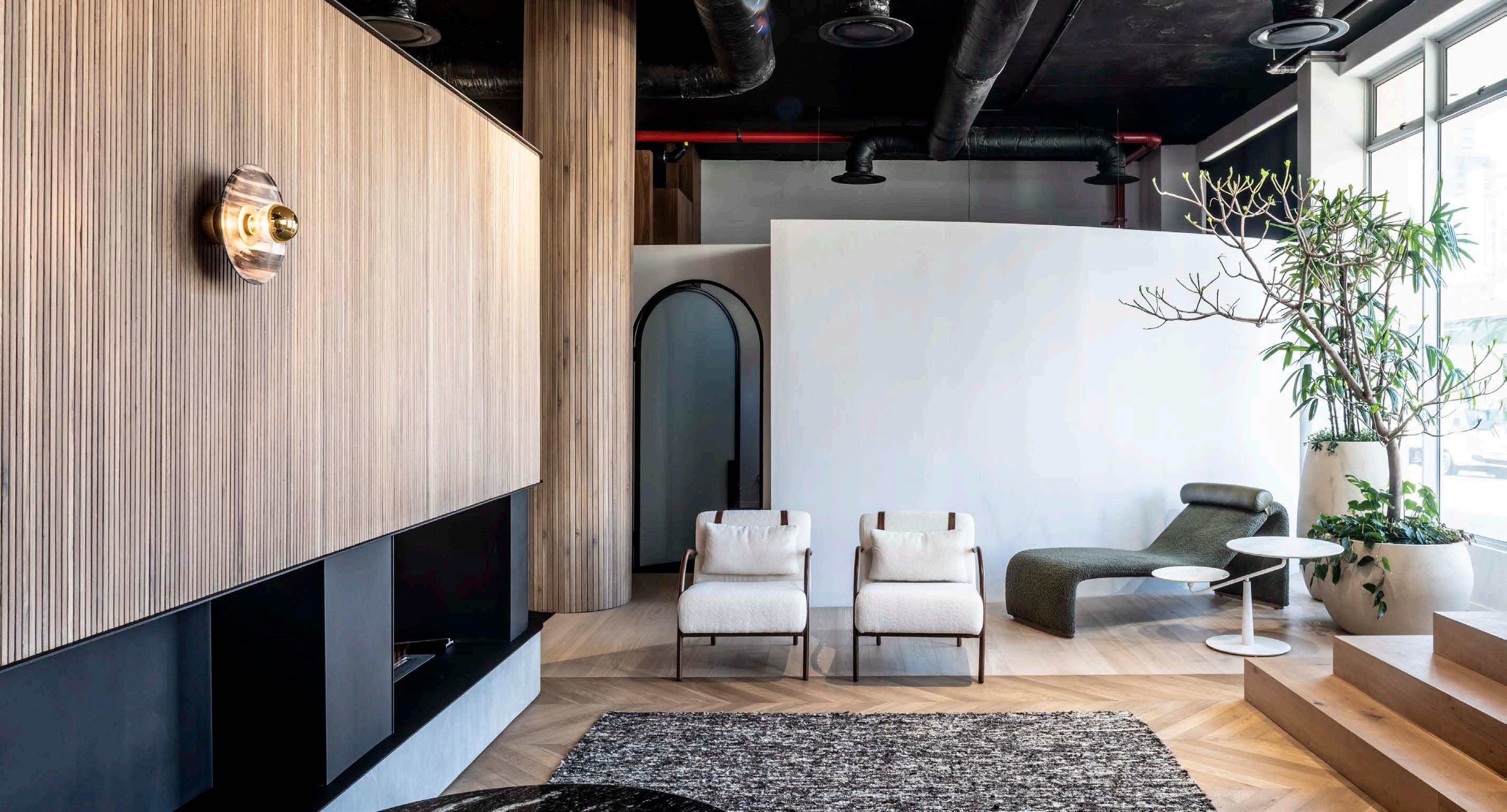
From forest to floor

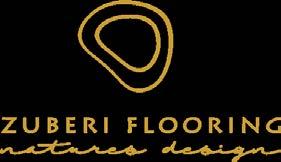
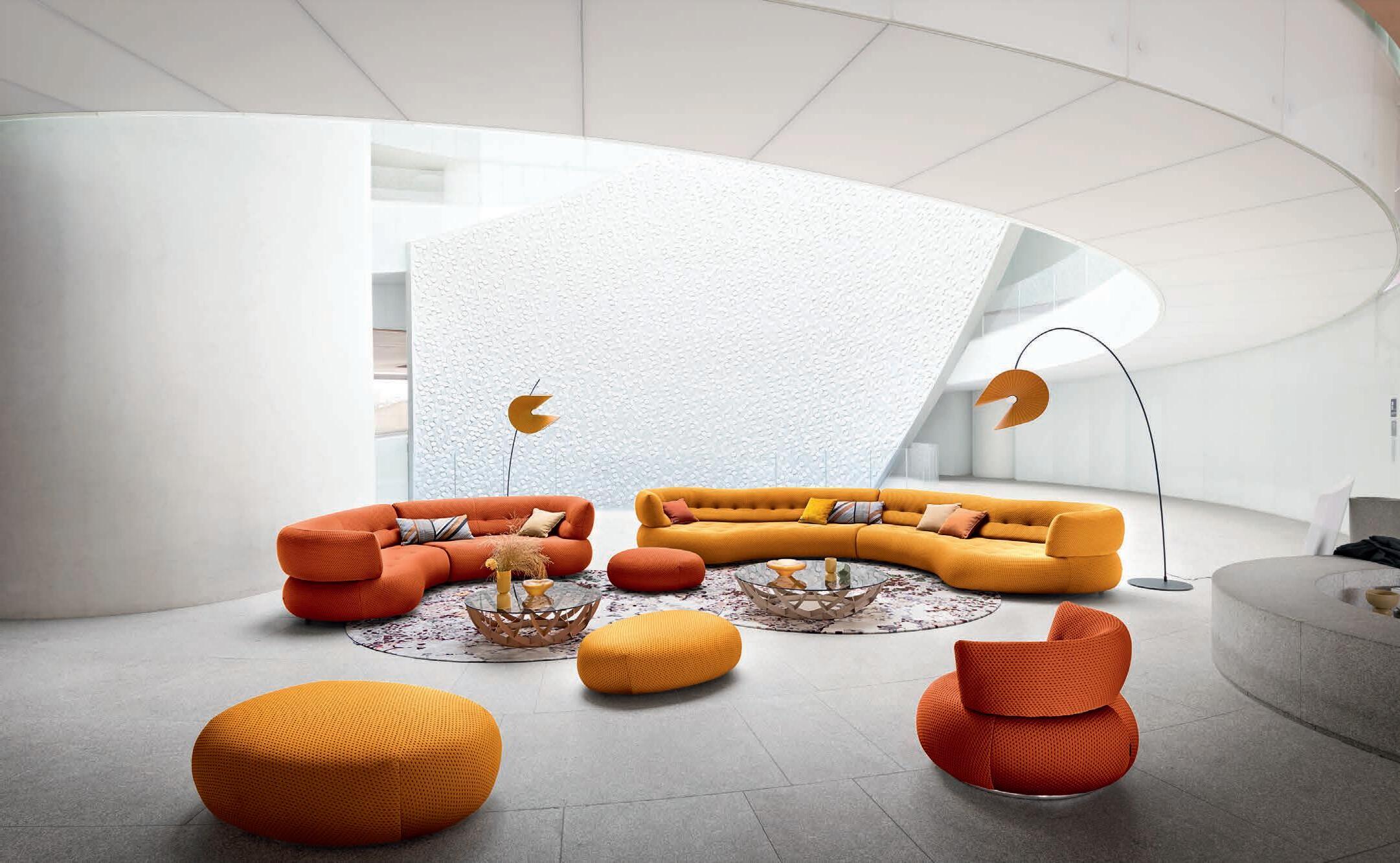
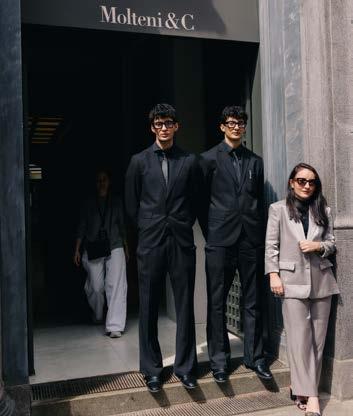



....hand-chiselled oak floors in modern apartments.











We turn our gaze outward — to the land, to the light, and the quiet force of nature as a muse.
We’ve curated a collection of homes, pavilions, and spaces that don’t just sit on the landscape, but belong to it. From sculptural sanctuaries to wild veld immersion, the projects featured here explore how the natural world shapes, softens, and sometimes even dictates great design.
We delve into the ideas of architects and designers who begin with the land itself. Meander through the gardens of Patrick Watson, relish in the transient artwork of Strijdom van der Merwe, and take a seat alongside Scape as we chat to Danie Steenkamp to explore the philosophy behind his organic-yet-manicured work.
Step inside the renovation of Spier Hotel and Wine Farm, the healing wonder of Sterrekopje Farm, and the quiet restraint of the Fox Browne Daunara Safari Camp. An exquisite Oggie showcase awaits as Abon Studio makes timber and ocean intertwine in their majestic seaside home in Hermanus.
This issue invites you to tread lightly, listen deeply, and let nature lead.
In August we follow this thread as we give you in-depth perspectives on sustainability that are both relevant and robust.
There is still so much to discover.
Chanel Editor-in-Chief












5 Modern Finishes
Attivo comes in 5 modern finishes complete with matching bathroom accessories to create the perfect cohesive space.

The UNFOLD Event, Hosted by Scape, Brought Together YARDCOM, SAOTA, and the Best of Cape Town’s Architecture Industry
What does it mean to live outside beautifully? On Friday 13th June 2025, YARDCOM, Scape, and SAOTA met to host the 75 of the best architecture and design industry figures at the Cape Grace Hotel, a location celebrated for its refined elegance and Monaco-esque views of boats on the bay. The scene was set for an afternoon dedicated to UNFOLD: an invitation to celebrate graceful, exquisite design for outdoor living.



The art of sensation
Cape Town’s most dynamic architects, designers, and landscape professionals from firms such as dhk, Peerutin Karol, Clinton Savage, GSQUARED, and more indulged in an afternoon conversation on the nuances of outdoor spaces, which included an enthusiastic exchange with the leading luxury, global brand YARDCOM.
Chanel Besson, director at Scape Magazine, launched the afternoon with a challenge: ‘Today is a means to approach outdoor design not as the final flourish, but as the opening invitation. And so, everything we experience has been curated in true Scape fashion — to indulge in the art of experiencing the outdoors.’
The journey began at the Cape Grace Hotel’s Bascule Bar, where guests meandered through a sound bath, soaking in the songs of birds and the flutter of falling leaves. As the muscles relaxed and nature’s calming effect stepped in, the guests filled out a quiz to uncover which of three outdoor personalities matched their own. It was a thought experiment inspired by YARDCOM’s illustrious range: rich in colours, textures, and sensations.
Once they received their result, a cocktail — matching their unique personality — awaited them at the bar. Sweet & Sour Metal, Fresh Cut Grass, and Smokey Embers made their rounds.
Symphony between man-made and natural
A culinary rendezvous followed, hosted in the Heirloom Restaurant upstairs. Each course arose the senses of the natural world. Joining together for late lunch talks, the architects and designers were guided through thought provocations by leading industry figures, Stefan Antoni, Greg Scott, Dion Walters, Franchesca Watson, and Fabio Pellacini. ‘What makes YARDCOM so special is that they understand it's not only about buildings or forms, but it's about that magic, that emotion, about making an experience in that environment,’ said Stefan Antoni, commenting on the exquisite YARDCOM showroom in China.
The brand’s managing director Damon Ma mirrored this sentiment saying, ‘Luxury homes today are not just about what’s inside. They are about what happens beyond the walls.




YARDCOM is here to truly ignite those feelings with products that reflect and belong in their environment.’ With a focus on using sustainable materials, the brand balances architectural clarity and comfort with environmental consciousness.
The design dialogues were centred around the theme of UNFOLD, with each speaker given a word to prompt their presentation. These words ranged from ‘pause’ to ‘transition’, and even ‘creation’, offering a window into how these five design icons interpret the outdoor realm. ‘For me, working with nature is about observation,’ Franchesca Watson said. ‘Nature isn’t static. It's about listening to nature and listening to your intuition, listening to how design makes you feel.’
Speaking about intuition, Friday 13th June was far from suspicious — in the middle of Cape Town's winter, the warm glow over the bay and fresh, blue skies welcomed YARDCOM, SAOTA, and Scape’s debut collaboration. On this unforgettable afternoon, guests were encouraged to engage with each of the five senses; the journey was a reminder that good design isn’t just seen — it’s experienced.



Timeless and luxurious flooring.
Smooth, versatile and hygienic.
Seamless indoor to outdoor flow.
Ideal for residential and hospitality.
Suitable for commercial and retail.



Impact and scratch-resistant.
Stain-resistant.
Slip-resistant.
Low maintenance and durable.
Eco-friendly and sustainable.
100% UV stable and colour-fast.
Can be applied directly over tiles, eliminating grout lines.
Quick and neat installation by certified national applicators.
Available in 36 colours.
Available in 60 countries worldwide.

Landscape Architect Patrick Watson Speaks to Author Garreth van Niekerk About His First Book, Veld: The Gardens and Landscapes of Patrick Watson
Sitting at a table in his home in Greenside, Johannesburg, where he has lived for three decades, Patrick discusses his life, and how he found his love for plants. Before settling in to chat to the author and curator of Veld, Patrick explains that he sees the garden surrounding the house — an eclectic forest that threatens to take over the building — as ‘a plant orphanage’, a place where specimens removed from projects during demolition, salvaged from building sites, or saved from homes he has lived in can find sanctuary.
Garreth: You’ve said before that you started gardening seriously when you were six…
Patrick: I think even earlier, quite frankly. You know, all kids garden, planting little flowers here and there, but I obviously carried on more seriously. After a few years, my childhood friends moved on to bicycles, girls, and then sports cars, but I’ve always been happy with the veld and my dogs. I grew up in Bryanston, where there were very few houses in the 1950s. It was just veld everywhere, like living on a farm, and I would walk with my parents every day. You’d see jackal, steenbok, snakes, chameleons — just fantastic to grow up with, really.
Garreth: What was school like for you?
Patrick: Honestly, I never took a serious interest in it. But I have always been really interested in reading and passionate about it. I remember going with my mother to buy a book when I was about four or five and telling her that I wanted ‘a true book’ because I’ve never really liked fiction. Of course, I enjoyed stories like Alice in Wonderland and The Lord of the Rings, especially when it comes
to landscape design, but I like facts most of all. I’ve always had this obsession with reason, and I think education at the time was really by rote, and I couldn’t understand it. My own kids had a different education. But what I understand, I understand, and what I don’t, I delegate, and it’s how I have managed to get all these jobs done.
Garreth: As someone who hardly exercises, I can barely keep up with you! When we walk through the gardens together, your pace is honestly herculean. But I remember walking with you through the park the other day and noticing how you weren’t just looking at plants, but looking at what grew alongside them, or near them, and how close this one was to the water, or that one on a hill.
Patrick: The truth is I only climb mountains to see what plants are on top. I certainly don’t do it for the exercise. When I’m walking, I collect seeds, or garden plants that I might use, but it’s not always about gardens. You have to understand ecology, how nature works, how it all fits together, all the little pieces, to do this job. It’s why at Steyn City, where I planted those wild trees, they are now seeding themselves. If someone had planted them atop a hill, or on a beach, they wouldn’t seed themselves. So, it’s about sustainability, but I’m also interested in aesthetics, about things being in their right place.





You need to know in your mind if it’s a grey garden, or a green garden, or a red garden, or this or that, and then you put it in, like, a computer. I have a very mechanical brain. But it’s all about concept for me. I’m conceptual; I like a concept, and I get a concept. Nature’s a concept. Seychelles, for instance, is a concept. The desert is a concept. Fynbos is a concept. But beneath it all, you have to know your plants, know that some ferns grow in water and some ferns grow in the desert. If you don’t know your plants, you are just wasting your time. A client asked me about Bobbejaansterts, also known as Black-stick Lily (Xerophyta retinervis), plants that are, like, 300 years old in the wild, and you have to remove all the soil with them, or they won’t make it. So, you need to know your plants, or things die, but it’s also about instinct.

I think instinct has a lot to do with gardening because it’s too complicated if you don’t work with your instinct. But still, it helps to see it in nature, because then you know. There are reasons for things, and you need to meditate on them. If you choose to work on instinct though, then you need to be dead serious. It’s what the Romans called ‘gravitas’. You must think and act like it is life or death in the decisions you make, otherwise it’s a serious problem.
Garreth: But surely it has become easier since you got older?
Patrick: Yes, experience helps. When you are young, you are quite unsure. It’s like that is set in a way, your creativity. It’s just the same with decisions. If you observe nature, you know how this works; if you put a sheep and a lion together, you can guess who is going to win. So it’s kind of like logic. Rationalism, I believe in. Logic, I believe in. Not lying, I believe in. I’m really obsessed with a thing being accurate or true. I don’t like marketing, pretending, or making a façade of something.
A lot of my work is about fantasy, but something like Sun City is an honest lie. It’s a jungle that shouldn’t be there, so that works for me. But I go more and more towards things like Steyn City that will seed itself. As I get older, I understand that it is important to do that rather. I knew that I would never finish it, I mean, after a decade it’s still only 10 percent finished, but the land will seed itself and nature will take over. Like the Magpie Robin that is coming back to North Island in the Seychelles after we planted the flora it needed to eat and survive. You see, it needs the right environment to look after itself, and to feel secure, and that’s what a good garden should do.
“When I’m walking, I collect seeds, or garden plants that I might use, but it’s not always about gardens. You have to understand ecology, how nature works, how it all fits together, all the little pieces, to do this job."

Photographer: Elsa Young





Go wire-free with the Wireless Valve Link! Using advanced radio technology, this innovative system makes it easy to connect valves without running wire or cutting into hardscape. Designed for Hunter ICC2 and HCC Controllers, it saves time and money with simplified installation, quick station expansion, and reduced maintenance. When complex landscapes pose a challenge, go wireless!


To learn more, visit hunter.info/ WVLem

Saxenburg Road, Blackheath, Cape Town, SA PO Box 281, Kuilsriver 7579
Tel: +27 (0) 21-907-1716
Cell: +27 (0) 82-801-9015 www.rovicleers.co.za


Midrand Branch | Tel: +0861-358-437 (FLUIDR) Cape Town Branch | Tel: +021-982-3546 www.fluidra.com jnascimento@fluidra.co.za




The Venice Biennale 2025: Where Caves, Elephants, and Metals of the Earth Meet

Perhaps we should start with inversion — with nonhuman animals rather than ourselves, with sound rather than sight, with minerals rather than materials — and with African traces beyond the continent. At the Venice Biennale 2025, the British pavilion entitled ‘GBR — Geology of Britannic Repair’ floated a similar idea, reframing ‘Britain’ by its presence outside its borders rather than from within. In co-curator Kathryn Yusoff’s words, ‘The idea was to turn the pavilion inside out’.
Words by Sameeah Ahmed-Arai



The neo-classical structure, with the words ‘GRAN BRETAGNA’, houses a cave-like interior. Mimicking this geological form, a manifestation of ecological time (longue durée), it encloses longer histories of colonialism and possibilities of repair — possibilities that are found within a return, not to a country nor a particular time, but to the earth as a single system. Kenyan co-curator Kabage Karanja says that ‘GBR — Geology of Britannic Repair’ is the beginning of ‘looking at architecture as an earth practice, a material practice that can transcend challenges’ by situating ourselves within the ‘earth system’ that we have neglected for so long.
At a British pavilion, one may not expect a cast of a Kenyan Rift Valley cave, a compass connecting London and Nairobi’s night skies on 12 December 1963 (the day Kenya gained independence), nor the Maasai clay beads hanging over the façade (creating a ‘Double Vision’). Should you find yourself in this moment of surprise, you may shamefully realise just how disconnected we are to the ‘earth system’, how subconsciously and cruelly borders limit our recourse. But here, the earthy interior is protective and regenerative; organic forms and morphic sculptures, painted in natural tones, continue the cave-like motif throughout the GBR exhibitions. Co-curator Kabage Karanja is familiar with this geology, a recurring theme in his practice cave_bureau.
When asked why this form, Kabage Karanje explains, 'Caves are ingrained in our prehistoric consciousness.’ It is where architecture begins: ‘Humanity’s early experience of inside and out, the nave, light wells, shafts, chambers, echoes — among many other architectural experiences — can be directly connected to our ancestors' encounter with caves. To put it more directly, caves are nature’s origin point and manifestation of all endeavours in the theory and practice of architecture.'
In an uncanny coincidence, caves find their way into the Togo pavilion too — the country’s first exhibit at the Venice Biennale. It’s an appropriate accident, for Togo was once a German colony and its early architecture relied on geological matter as resistance. In the 17th century, ancient Nôk cave dwellings acted as cliffside shelters where residents sought refuge from slave traders. These images are displayed alongside traditional construction techniques and modern architecture. The correlating cave stories are signs that the ‘earth practice’ may have its own logic, an intuitive force connecting places in ways we are yet to understand. Where else may we find a cave-ly abode? How are our stories mirrored, subconsciously, coincidentally, in each other’s architectural geology?




The architecture of new language
We, humans, have an unusual bond with elephants. The Kamba tribe in Kenya knows this, believing that these grossly intelligent creatures were once humans who had a magic ointment smeared on their teeth. In South Africa, many of us have grown up with the tale of Saul Barnard and Oupoot, the elephant he is curiously bonded to — a story from celebrated writer Dalene Matthee’s novel Kringe in ‘n Bos (Circles in a Forest) Inter-species communication is mystical, particularly with wildlife where the magnitude of this possibility makes it even more fantastical.
Bass guitar is probably not the first instrument that comes to mind for languaging across species. But it is Franco Schoeman’s way of understanding elephants. ‘As a musician I mimic their discourse using a bass guitar and pitch modulation devices,’ he explains. ‘In the process of learning what they say to each other, we learn more about how we can build our own vocabulary to discuss and explain boundaries or limitations to them.’
But how? The key is in broadcast towers and infrasound, which has low frequencies below 20 Hz. ‘The wavelengths of low frequency audio are large, and this allows us to reach a herd across the vast landscapes of Limpopo and other parts of the Southern African subcontinent,’ Franco explains. This sound is felt before it’s heard.
“Bass guitar is probably not the first instrument that comes to mind for languaging across species.”
One is invited to experience this at the Talking to Elephants exhibition, which features three ASCENDO infrasonic subwoofers and an active coaxial speaker for higher frequencies. From the ceiling, Marc Sherratt’s horn-shaped model, designed to distribute the infrasonic frequencies across the landscape, is suspended midair. ‘Sometimes we as architects think too short term. The great cathedrals of Europe were not completed within an architect’s lifetime. Could our 60-to-100-year timeline for our buildings be too short in forming a perspective for real change?’ he asks.
In Limpopo and surrounding areas, the elephants’ natural migration has been prevented by expanding developments. Elephant herds are overpopulated, callously controlled through culling and contraception. Architect Marc Sherratt and musician Franco Schoeman sought to restore natural migration routes. Together they developed a language to prompt elephants along a new 1000-kilometer migration corridor, designed to coincide with rural communities who benefit from the elephants that disperse seeds, creating local fruit trees for food security along their path.
Talking to Elephants is just one of the team’s bio-acoustic endeavours. Land Ear, an AI device, marks bird calls and air pollution to generate a measurement of biodiversity at a site. Marc teases, ‘I have the responsibility of training the software to correctly identify bird calls, which is like teaching a smart child. Sometimes, it thinks a truck reversing is a black cuckoo!’
Research on infrasound as elephant language is still developing. While our linguistic capabilities may be infantile at this stage, Franco reminds us: ‘what we know for sure is that they are listening.’


Photographer: Sébastien Agnetti ©Rolex
“The partners of the project share the same dedication to sustainability in its candid application rather than a label for affirmation.”
The architecture of three’s It starts in threes. And it starts in Africa.
‘Earth, recycled metal, and some concrete,’ says Mariam Issoufou, Nigerien architect and designer of the Rolex Pavilion. This is the golden trio that has shaped buildings in her home country, Niger. She chose to continue a tri-material palette for the exhibition, authentic to its immediate locality and artisans in Venice. Glass, metal, and wood are the stars that align.
The partners of the project, Rolex and Mariam Issoufou Architects, share the same dedication to sustainability in its candid application rather than a label for affirmation. Mariam dissects what this value means: finding opportunities for reuse, sourcing local materials, and using as minimal resources as possible. ‘Every beam [of wood] that is recovered has its own story,’ says production manager Luigi Ascenzi, commenting on the aged wood sourced from discarded structures in Venice that are tailored into triangular prisms. Once joined, these form the walls of the site.
In the artisans’ workshop, ovens scorch and thick smoke covers their heirloom-in-process. It is an exercise in precision and surrender; each circular piece of recycled Murano glass may be similar in shape and tone but will naturally form their very own quirk to declare, ‘This is my skin’. These semi-translucent disks are positioned in linear patterns on the ceiling of the pavilion, creating a dappled light effect on the interior walls. It’s an ode to Italian architect Carlo Scarpa, well known for his mastery of light.
Inside the pavilion, the exhibition features a film screening of the artisans that made the space, a documentary on Beirut produced by Armenian-Lebanese architect Arine Aprahamian under the mentorship of Anne Lacaton, and a display of scenes from Rolex’s new showrooms in Milan and Tokyo.

Photographer: Matthieu Gafsou ©Rolex
Vertical shaft gasoline (petrol) engine


Here you can nd one of the most extensive ranges of locally manufactured indoor and outdoor braais. Thermo is a woman-owned, family run, designer and manufacturer of quality and bespoke braais. All braais in any range and style are available in mild steel, 3CR12, 304 stainless steel or a combination of materials, i.e., a mild steel braai with a brushed stainless steel façade.
Built-in Braais
They have 3 ranges of braais, available from 800 mm to 1800mm wide, as well as bespoke sizes. Two of these ranges include Spit Braais and one is available as Double-sided. Another, more a ordable range, is available in 4 sizes.
Combination Braais
Available in 3 ranges, they have an extensive range of combination braais – a single braai with separate wood-burning and gas sections. Available in a whopping 19 sizes - from 1200 mm to 2250 mm wide - as well as bespoke sizes.
Freestanding Braais
The rst to manufacture a braai with double-skinned sides, our freestanding braais are supplied on a cabinet, with 2.4 m ues, turbo cowl and ceiling plate. Installed just like a freestanding replace, it is available in both our DeLuxe and Professional ranges.
Thermo Fires also design and manufacture a large range of standard and bespoke freestanding and built-in replaces - with di erent freestanding ranges available as Corner units, Wall standing units as well as room dividers. Their built-in units are available in 3 di erent ranges and in 8 sizes, as well as bespoke. Want something to make a statement? They also manufacture built-in corner units, vertical replaces and Octagon units. With their 20-year quality warranty you simply cannot go wrong!






The Act of Making, Sacred and Generative, Proliferates the Senegalese Landscape and Stephen Burks Man Made Practice

“Termite mounds are believed to be thresholds to the spiritual world, containing the spirits of ancestors.”
Out in the African desert, the smallest creatures, barely the size of your thumb, have built climate-controlled fortresses, some up to 5 m tall — and they’ve been doing this for thousands of years. Stephen Burks and Malika Leiper, partners at the awardwinning industrial design studio Stephen Burks Man Made, travelled to Senegal’s southeastern Tambacounda region as artists in residence at Thread. Here, they encountered several termite mounds during their daily walks in the remote village of Sinthian. These architectures are believed to be the largest non-manmade structures dating back 350 000 years. Maintaining a constant temperature to resist the harsh climate, a central chimney funnels hot air, while cool air is drawn in from multiple openings at the mound’s base.
Seeking opportunities that bring their hands closer to the act of making, Stephen and Malika created a sculptural form, inspired by the mounds, using papier mâché. Once they situated it in the landscape, something changed: ‘The work came to life when we placed the termite mound in the natural landscape. It transcended its physical form and became monumental,’ Malika says. In Cambodia, where she was born and raised, termite mounds are believed to be thresholds to the spiritual world, containing the spirits of ancestors.


During their residency program in February 2025, Malika and Stephen were based at the cultural centre designed by architect Toshiko Mori. It houses two artist studios under an undulating thatched roof, which functions like an open-air living room. In this welcoming environment, community members gather alongside local and international artists. Thread’s artist residency program, spearheaded by the Josef & Anni Albers Foundation in partnership with the non-profit Le Korsa, was a suitable match for the design studio’s collaborative mission, with the program enabling artists from around the world to advance their work in an extraordinary setting. ‘We wanted to respond to our surroundings with a project that could be in dialogue with the nature, the people, and their culture,’ Stephen Burks explains.
Stephen and Malika’s site-specific artwork is emblematic of their studio’s commitment to uniting art, community, and industry through a hands-on, workshop-based creative practice. Ultimately, their belief that everyone is capable of design facilitated an unusual alliance with the world’s most ancient architects.




Strijdom van der Merwe’s Land Art Rises and Fades With the Natural Cycles of the Earth
First was the land, always the land.
Strijdom van der Merwe’s works are intentionally transient — fleeting gestures rather than conventional sculptures. They are created on-site, using only materials found in the vicinity and destined to exist for a fragment of time before yielding to the elements.

In 2014, the Smithsonian Institute in Washington, DC, held an exhibition entitled, ‘Land as Material and Metaphor in the Arts of Africa’. This exhibition addressed the larger topic of the role the landscape plays in all of our lives. We have become a society that has distanced itself from nature and tends to see itself as superior to nature. To quote the British artist Richard Long, ‘The land is the beginning and the end of existence, whether in terms of canvas, clay, or the fabric of the mind; the place you stand where you make your first mark, There is always a starting point that affects the outcome of your undertaking.’ Land art is part of a natural cycle. Most land artists do not seek to impose their identities on nature but rather to integrate into a larger cycle. The landscape influences the artist more than the reverse.
It also responds to pressing questions of our time. ‘I believe that over the last four or five years, this art form has increasingly contributed to people's appreciation of the landscape, particularly in light of global warming, desertification, melting ice caps, and similar issues,’ Strijdom explains. ‘Land art visually represents what statistics in newspapers and academic lectures strive to convey.’
Sculpting This Earth, directed by Victor van Aswegen, is the first full-length documentary about land art from the southern hemisphere. In the film, Strijdom produces 28 artworks, talking about each one while making it. Currently on tour across Europe, Canada, and the USA, it was previously screened at the Labia in Cape Town, The Bioscope in Johannesburg, and other venues across the country. We spoke to Strijdom to understand more about this transitory form of art, and the journey that led him to create with nature.




As an artist, what is it like going through the process of creating knowing that the artwork has an end, that it’s not permanent the way traditional art is?
Working in nature you are constantly aware of its cycles: sunrise, sunset, shadows, bright sunlight or an overcast day, tides of the sea, wind, or calmness. When producing an artwork, you must take these into account, realising that these natural processes will have the ultimate influence on the artwork. With this in mind, you rather take part in the process.
This means that you are not creating work for the permanent market, you are creating work that has everlasting influence; you discover the exact moment in nature that will never be the same again. It is a marriage between nature and you at that moment.
Which materials have been particularly rewarding to work with?
I strive to start each day without any preconceived ideas. I clear my mind of all the worldly belongings, influences, and so on. I take a walk in nature and open my mind to the surrounding areas; the material that I find on such a walk will determine what I do. Once such a site reveals itself to me, I will sit and meditate, study, take in the reason for that site, observe all the influences, and how the day will change. As the afternoon or evening approaches, only then will I start working on a project. The Karoo and its materials have always been very rewarding to me. The challenges are so much more intense, working in such a minimal landscape you only have to move one rock out of position and the whole landscape changes; the challenge is where do you move it to or do you move it all.
“You discover the exact moment in nature that will never be the same again.”
How do you sense what the final artwork will look like as you navigate the work from the human scale to the bird’s eye view?
Land art has a role in urban environments, as not all land art is temporary. Depending on the message the artwork aims to communicate or the preferences of a client, it can also be permanent.
How did you find yourself in landscape art?
I grew up on a farm where I spent many hours walking in the forest and landscape, discovering nature on my own. After a while you start turning rocks upside down, bending leaves, making knots in the long grass, realising that earth has different textures... It was only after studying art at university that I realised all those essential elements of colour, perspective, texture, line, weight, you name it, exist in nature. I was introduced to another land artist’s work and realised that it’s not so far-fetched to produce work in nature. In Europe, USA, and especially the East, this art movement is very prominent, and it gave me good reason to take the giant step to work full time as a land artist. Most of my invitations and commissions are from abroad.
These days with Google Maps it’s easy to plot out the dimensions of how the work will fit into a specific landscape. First you visit the site, understand the site, and then you work on a concept influenced by your perception of the site and the natural processes that influence that landscape. Then the concept develops, and you put it down on Google and present it to the client. Before making large scale works you have to take weather patterns, planting seasons, harvest time, visibility, and so on, into consideration.
How has nature responded to your work?
The beauty of these works is that nature has its own way of dismantling or taking over the work. In many cases the incoming tide can wash away half of the work or flood it in such a way that you could never imagine, making it even better. Or, large elephant ear leaves can milt down because of the heat of the afternoon, changing your creation into something that you had never foreseen. In being sensitive towards nature and its processes, you always aim to make something where nature has a greater impact on you than you on nature. By respecting and following its disciplines you gain a deeper understanding of its existence.

Imagine a single tool that does it all. The STIHL BG 86 Petrol Blower is that tool. This isn't a one-trick pony – it's a powerful trio in one ergonomic package. Experience incredible blowing force for clearing any debris. Then, switch to vacuum mode with the optional shredder kit and watch it effortlessly suck up and shred waste into fine, valuable mulch. This mulch isn't just waste reduction; it's a resource for healthier plants, natural weed suppression, and moisture conservation, especially crucial in climates like South Africa.
Get the multi-functionality and efficiency your demanding work requires with the BG 86.




LOW MAINTENANCE | WEATHER RESISTANT WATER REPELLANT | HIGHLY DURABLE | UV STABLE
LOCALLY MANUFACTURED | LONGEVITY IN DESIGN specialist suppliers of large scale, low maintenance pots + planters | bench + wall paneling | seating + furniture | bollards, bins and various public space installations | custom design + landscaping essentials




+27 (0)82 443 0084 | info@igneous.co.za | www.igneous.co.za innovators in all weather, lightweight polyconcrete

Over the past 15 years, Igneous Concrete has evolved substantially, expanding its offering to an extensive collection of lightweight polyconcrete seating furniture, pots and planters, public space installations, and panelling.
The resin-based polyconcrete was originally conceived to provide a moveable (while substantially weighted), weather-resistant, and water-repellant alternative to standard concrete. This material has been shaped and transformed to suit luxury leisure destinations, commercial and retail centres across South Africa, and substantial open, public spaces including major new government head offices.
Aesthetic and practical
Recently, the team embarked on their largest custom design project for a multi-level exposed rooftop in Cape Town. The project included aesthetic custom planters, integrated modular seating, water troughs, bamboo inlays, extension tabletops, benches, and panelling that concealed required drainage.
For practicality, the project included built-in electrical points to allow for imbedded lighting, pre-programmed irrigation, drainage, and water supply. All of these were connected through the various
planter-bench components to provide a seamless under-deck mechanism that sustains both in-planter and vertical wall gardens.
The polyconcrete material also allowed for an expansive installation with reduced weight compared to alternatives. Especially where troughs and planters included large volumes of water and planting, this material choice reduced the possibility of leakage and eased both craneage and placement on site.
Global expansion
Igneous Concrete’s export market has also steadily increased with projects in West, East, and Southern Africa, the Indian ocean islands, and the UAE. As a result, Igneous Concrete’s logistics capabilities are expanding its offering further into the continent, leading to exciting collaborations with new and longstanding South African clients and various specifiers in various countries.
In-house CNC ownership also allows for greater customisation to suit specific requirements and preferences, whether that’s incorporating mixed material inlays, lighting, or solutions for practical needs. The quality and longevity of the brand's material and workmanship remains, with ongoing expansion in both what they can do and where they are going.

For DDS Projects, Nature Is

Their gardens are organic, intuitive — and ordered, manicured to perfection. DDS Projects designs landscapes that not only enrich communities with their beauty but also protect the natural environment. We spoke to Danie Steenkamp to learn more about his sensitive curation that maintains ecological integrity.
What interests you about landscape architecture?
I grew up on a farm in the Klein Karoo; my dad was a fruit farmer, and my mother was a florist and gardener, so it was a very natural choice for me to go into this space. I officially started DDS about 14 years ago. What makes us different is that we're not contractors, but we’re also not just designers. We’re really involved from inception all the way through to execution and there’s a lot of value in being actively involved in the process. As we respond to the site, as the site reveals itself, we get the opportunity to change our design and adjust accordingly.
What has your career taught you about nature?
It’s very humbling to work with nature. Especially working in the outdoors where your projects are exposed to the elements, and specifically in a time where the climate is getting more and more extreme. You then have to free yourself from control. You have to let nature be the teacher. And it makes sense to look at natural patterns, the plant communities, and systems and try to mimic that on site.
What impact do you hope your work will have on people? It's to change people's perception of beauty, for people to appreciate wild landscapes and things that are slightly looser and not as tame. And to change people's perspective on what a garden can and should be. Spaces are inherently emotive, and you can kind of control how people feel with certain design choices. Planting, in particular, interests me because it has the ability to evoke feeling.
Can you explain your design approach? How do you tailor each project to its intended function, history, and context?
We have a very gentle approach. I’m extremely aware of context and the natural world around me and I believe that there are certain nuances and subtleties that one must be very sensitive to in order to respond appropriately. Responding to the site is important. If you look closely there are many cues that can help inform the design. Understanding nature helps as it becomes possible to make minor tweaks that harness nature as a tool to create wonderful landscapes.
Tell us more about your approach to resilience. Resilience is a key to successful landscapes, and I think what makes a landscape resilient is for it to be 'of the place' and not 'of the moment' so we focus on the opportunities and constraints of each site and really try and work with this rather than against it.

“As the site reveals itself, we get the opportunity to change our design and adjust accordingly.”


“Spaces are inherently emotive, and you can kind of control how people feel with certain design choices.”
How do you honour and respect the natural environment in your work?
I have a deep appreciation for nature, and I think being sympathetic to the natural world and taking cues from the environment and landscape help guide our design process. There are cultural plant groupings that create really powerful associations and strengthen the sense of place, both of which anchor buildings to the landscape. Gardens, especially in the rural or agricultural contexts where most of our projects are based, play a vital role in connecting the architecture to the natural world — a means to weave the man made into the wild.


Are you tired of battling stubborn debris, messy clippings, and a chaotic worksite? Imagine a single tool that not only blasts away leaves and litter but also vacuums and transforms them into nutrient-rich mulch. Introducing the STIHL BG 86 Petrol Blower: your ultimate partner for on-site cleanup.
In the demanding world of landscaping, construction, agriculture, and property maintenance, efficiency and versatility are paramount. The STIHL BG 86 is not just a blower; it is a beast, designed to streamline your operations.
A 3-in-1 garden powerhouse: blower, vacuum, and mulcher
This is not a one-trick pony; it is a powerful trio in one compact, ergonomic package. At its core, there is an exceptionally powerful blower with a STIHL 2-MIX engine. Clearing pathways, driveways, flowerbeds, and sports fields has never been quicker or more efficient, and its balanced design ensures comfortable operation, even during extended use.
The ‘beast mode’ of the BG 86 unfolds when you switch to vacuum mode — no more tedious raking and manual clean-up. Your All-in-One Site Solution
Attach the vacuum shredder kit (available as an accessory) and watch it effortlessly suck up leaves, twigs, and other garden waste. The wide intake ensures maximum coverage, allowing you to clear large areas in a fraction of the time. As the material is vacuumed, it passes through STIHL’s innovative shredding blade, reducing it into fine, uniform mulch — creating a valuable resource right on your site.
This mulch can be used to enrich the soil, returning vital nutrients to promote healthier plant growth. It is also an excellent barrier to suppress weeds and help conserve moisture, crucial in drier climates like South Africa.
Every detail is meticulously crafted to deliver a superior user experience. The STIHL 2-MIX engine is energy efficient, delivering high torque and impressive performance while reducing emissions and fuel consumption, so you get more done with less impact on the environment and your wallet.
The ergonomic design and anti-vibration system means it is perfectly balanced and lightweight, comfortable to hold, and easy to manoeuvre, even in tight spaces. STIHL’s simplified starting procedure ensures hassle-free ignition, allowing you to get to work faster. Built with high-quality materials to withstand the rigours of demanding professional use, it ensures longevity and reliability. Switching between blowing and vacuuming modes is quick and straightforward with the optional kit, enabling you to adapt to various tasks without delay.



Must-have for your business
Experience increased efficiency by drastically reducing the time and effort you spend on site cleanup. STIHL BG 86 saves you money as you eliminate the need for separate blowing, vacuuming, and mulching equipment, and it reduces waste disposal costs by creating usable mulch. Its versatility is suited to a wide range of tasks — from routine garden maintenance to clearing construction sites, all with one powerful product. Most importantly, you’re investing in a reliable tool renowned for its durability, performance, and extensive after-sales support network.
Experience the difference
Visit your nearest authorised STIHL dealer for a demonstration to experience the power of the STIHL BG 86 Petrol Blower yourself. STIHL BG 86 is more than a tool; it is an investment in efficiency, productivity, and a cleaner, greener future for your outdoor spaces.
www.stihl.co.za
The Quiet Drama of Earth and Sea Informs Abon Studio’s Design

Perched along the rugged coastline of Hermanus, this residence was designed as both a retreat and an anchor, a place to look outward across the ocean and inward toward one’s own rhythm of living. The project responds not only to the intensity of the surrounding landscape, but also to the quiet rituals of daily life, framed by changing light, wind, and seasons.
Location: Hermanus, South Africa
Size: 680 m²
Photographer: Greg Cox


“The aesthetic remains restrained and honest. Minimalist surfaces allow the material palette to speak.”

Flooring: Oggie Hardwood Flooring | Glazing: Go Green Design | Off-shutter Concrete: Walker Bay Concrete Products | Kitchen: Gassner

James Mitchell, Architect and Founder
@abonstudio
www.abonstudio.com
Embracing constraints
From the outset, the brief called for a natural, open plan home with a modern language, rich in texture and closely attuned to its environmental conditions. The design needed to prioritise views of both the sea and mountains, allow for generous volumes, and incorporate robust materials able to withstand the coastal climate. The site itself presented a series of challenges: a narrow footprint just 10 metres wide and 33 metres long, accompanied by strict height limitations and severe exposure to the elements.
Rather than seeing these constraints as limiting, the design embraced them. The architectural response was to work with the terrain, not against it, by recessing the lower level into the earth, effectively creating a third floor that wouldn't exceed the allowable building height. This move unlocked panoramic views while preserving privacy and softening the building’s silhouette within the landscape.
Sensitive yet robust
Internally, the aesthetic remains restrained and honest. Minimalist surfaces allow the material palette to speak: oak veneer floorboards, tactile light textures, finely detailed timber joinery, and moments of softness are set against the weight of concrete and stone. The interiors were developed in close collaboration with the clients. Under the guidance of Abon Studio, the look and feel was explored through visualisations and a design intent to unify the architectural and interior expression.
Beyond aesthetics, the home is self-sustaining. A rooftop photovoltaic system powers the property, while a borehole irrigates the indigenous landscape. Passive orientation strategies, generous overhangs, and double-glazed openings provide thermal comfort year-round without overreliance on artificial systems.
The story of earth and sea
At the heart of the design is a play between contrast and continuity. Off-shutter concrete, the home’s primary structural and expressive material, offers solidity and permanence. Its raw finish stands in purposeful tension with warm timber accents, creating a dialogue between the elemental and the refined. This interplay continues in the sequencing of spaces, where heavy thresholds give way to light-filled volumes and broad panoramic openings frame moments of intimacy and seclusion.
The lower level, sunken into the earth, becomes a private garden oasis, protected from wind, immersed in nature, and dappled in coastal light. This quiet zone contrasts with the upper levels, where living spaces unfold toward the sea. Here, large panes of glass slide away to erase boundaries between inside and out, offering the kind of openness that feels both expansive and composed.
Excavating into the site’s rocky substrate was both a necessity and a narrative opportunity. The stone removed during construction was not discarded; instead, it became part of the home, used to clad walls, define courtyards, and form a covering layer on the roof. This approach allowed the architecture to reuse its own land, binding the building back to the terrain it occupies.
MEET THE TEAM
Architect: Abon Studio | Structural Engineer: Thys Van Rooyen Consulting






In high-traffic, wet areas such as swimming pool surrounds, patios, walkways, and bathrooms with walk-in showers, slip resistance isn’t just a feature — it’s a necessity. When you add the demands of ADA (Americans with Disabilities Act) compliance, the surface choice becomes even more critical. Enter Quartz Carpet, a non-slip flooring solution that blends beauty, safety, and accessibility in perfect balance.
The ADA requires surfaces on ramps and accessible routes to be firm, stable, and slip-resistant — particularly in environments where water is a constant factor. Quartz Carpet, made with natural quartz stones and resin binders, offers a textured, seamless finish that delivers outstanding grip even when wet. This is especially valuable in spaces where families gather, and children play — like around swimming pools, where little feet often sprint across slippery surfaces.
Quartz Carpet helps prevent dangerous slips and falls without compromising on aesthetic appeal. Its soft underfoot feel, gentle contours, and organic colour palette make it equally at home in luxury entertainment areas and accessible bathrooms.
For patios and walkways, particularly those with ramps or sloped access, Quartz Carpet provides a comfortable, ADA-compliant surface that’s safe for wheelchairs, strollers, and walkers. It is UV-resistant, weatherproof, and incredibly durable, handling heavy use and harsh conditions while maintaining its grip and good looks.
For walk-in showers, Quartz Carpet offers a spa-like feel while ensuring that elderly users, those with disabilities, and children are protected from dangerous slips. Quartz Carpet has passed numerous international and local hygiene tests for use in commercial hotels and spas.
Ultimately, Quartz Carpet delivers peace of mind with every step — whether it’s a child racing around a pool or an elderly guest entering your bathroom with confidence.













Fox Browne Creative and Jack Alexander Strike a Balance Between Luxury Design and Ecological Sensitivity at Daunara Safari Camp
April 2024 saw the opening of Daunara Safari Camp, an exclusive-use luxury tented retreat located on the edge of Botswana’s Okavango Delta. This secluded five-suite camp — a collaboration between Fox Browne Creative and architect Jack Alexander — is an exercise in discretion. Conceptualised not only to frame the landscape but to defer to it, the project balances a strong architectural and design identity with a light ecological footprint. The sensitive nature of the Delta environment presented both a privilege and a challenge — calling for a design approach that would sit lightly on the land while framing the natural beauty of its surroundings.

Fox Browne Creative has envisioned a private safari villa that offers an immersive guest experience within a refined, site-specific design. The built form consists of five tented suites — three standalone suites offering privacy and two connected by a shared sitting room for family use. Features such as the indoor sitting room, family-friendly kitchen, bar, wine cellar, shaded verandas, sunken fire pit, and saltchlorinated lap pool anchor the communal experience.
A modern boma serves as the focal point, while a state-of-the-art gym and a massage tent — both with views over the water — introduce a wellness element to the experience. The result is a layered spatial experience that feels at once designed and organic, composed and comfortable.

“The sensitive nature of the Delta environment presented both a privilege and a challenge — calling for a design approach that would sit lightly on the land while framing the natural beauty of its surroundings.”



Environmental sensitivity guided the project’s direction. The lodge operates on renewable energy from a large solar farm, while passive design elements such as insulated floors and walls, tripleskin PVC canvas roofs, and natural ventilation reduce energy load.
Visual metaphors
Five prominent trees along the water’s edge informed not only the layout but the spatial rhythm of the camp. Its architecture follows the existing contours of the site, while maximising privacy and panoramic views for each of the five spacious tented suites. A raised wooden walkway functions both as connective infrastructure and as a visual metaphor, echoing the Delta’s meandering waterways. The entire camp is elevated on a steel and timber frame, built without the use of concrete, to minimise environmental impact and preserve the fragile ecosystem below.
The interior materials — building on a narrative of restrained luxury and local connection — were locally sourced and feature tasteful, handcrafted details. Quilted canvas walls framed by brass-studded timber panels and intricate tent hardware show a commitment to local craftmanship. Hand-embroidered mosquito nets reference Delta botanicals, while bespoke carpets, inspired by the underside of a water lily, embed visual narratives in each space. These selections reinforce the camp’s dual aim: to offer guests an experience that is both deeply authentic and elegantly composed.
Daunara Safari Camp showcases a model of lowimpact luxury design. Every decision, from the masterplan to the mosquito nets, reflects an alignment of architecture in dialogue with landscape. In a region where ecological responsibility is non-negotiable, Fox Browne Creative and Jack Alexander show that luxury design can, indeed, tread lightly.


“The entire camp is elevated on a steel and timber frame, built without the use of concrete, to minimise environmental impact and preserve the fragile ecosystem below.”

The Sterrekopje Farm Fortifies Its Healing Powers Throughout the Seasons
At the foot of the
Franschhoek
mountains, Sterrekopje Farm is a homely oasis, where you’re invited to relax amongst cool waters and luscious gardens designed by Leon Kluge.
Led by ancestral wisdom and instilling a conscious way of living, the farmhouse was established to nourish earth, body, and soul. It’s a place that says: let go and allow yourself to be mentally and physically renewed. Expansive gardens, nurseries, and vegetation make it an ideal escape from the built-up city.
Location: Franschhoek, Western Cape


Surrender to the seasons
The gardens at Sterrekopje serve as sanctuaries for guests to ground themselves whilst staying at the regenerative farm. The installation of this ambitious, sprawling expanse of gardens called for an on-site nursery where rare seeds from all around the world could be grown to produce the species-rich palette found in almost all the plantings.
The farm is divided into different segments including a Chakra, Orchard, Butterfly, and vegetable garden. Wild meadow plantings were achieved through a combination of perennial planting and the sowing of annuals to achieve a balanced, relaxed atmosphere. 'The garden is more about textures than colours. I love diversity in plants and that is ever present in the Sterrekopje landscape,' says Leon. Wilder plantings are contrasted by clipped forms or mass mono plantings which act as palette cleansers as one walks through the mosaic of garden rooms. Using the natural stone available from the site was an important consideration to create the walls and pathways. Additionally, organic materials from the old vineyards were used in the construction of woven planters.
The gardens surrender to the seasons, creating interest throughout the year. 'The gardens look different every month of the year. That way, guests get to experience a completely new plant palette when they visit the farm on different months,' Leon explains. The different gardens are designed with an emphasis on tactility, offering a unique experience for guests. The invitation is to engage with the surroundings through each of the senses. Guests are encouraged to smell, touch, and pick the plantings to feel and be in nature holistically.
Harvesting an ecosystem of healing
The vegetable garden offers an opportunity for guests to gain a stronger connection with nature through learning about sustainable ways to use edible plants, which are also harvested for the hotel’s restaurant. ‘Guests come here to unwind and meditate during their stay and the gardens create the environment for grounding and self-care,’ says Leon.



“The installation of this ambitious, sprawling expanse of gardens called for an on-site nursery where rare seeds from all around the world could be grown.”
'From the beginning, the idea was to create a space where people could wander, get lost in the grasses, and feel like a child again. A place to reconnect — with themselves, with nature, and with animals, which so many people have become disconnected from,' says Nicole Boekhoorn, co-founder of Sterrekopje. Nicole and Leon worked closely together to create a space that is at once aesthetically beautiful and spiritually revitalising.
Movement, creativity, and play are gently woven into the fabric of the farm’s rhythm. At The Atelier, guests can unleash their inner artist — painting, drawing, moulding, pressing, and making. With an apothecary, spa, and atelier, the farm’s amenities encourage rest and healing during your stay. Whether you’re seeking a private oasis or a slice of idyllic farm life, Sterrekopje is curated to foster a restorative connection to nature, which in turn inspires contemplation and creativity.

Preserving Performance. Reducing Waste. Giving Back. With Seriously Cool Machines.

At SMS (Sports Maintenance Services), we’re not just about turf — we’re about transforming how artificial sports surfaces are managed, one recycled pitch at a time. Founded in 2024, SMS is South Africa’s specialist in removing, reclaiming, and reusing artificial sports turf. Our mission? To help the planet, support local communities, and give synthetic fields a second life — all while keeping things efficient, ethical, and a little bit epic.
What we do
Here’s the play-by-play of how we work:
Infill extraction: First, we use a world-class, ultra-rare piece of machinery to remove the sand and rubber infill from used synthetic
pitches. How rare? There are only four of these machines in the entire world — and SMS proudly owns one. Now that’s what we call specialised.
Rolling it up: Once the infill is out, we carefully roll up the turf so it can be reused or repurposed — no ripping, no waste. Just smart, clean removal.
Resell, recycle, or donate: We don’t believe in throwing away what still has value. Instead, we resell high-quality, second-hand turf, donate it to underprivileged schools and sports clubs, and recycle where possible — helping stretch every square meter to its fullest potential.
Why we do it
Let’s be honest — turf removal has traditionally been wasteful, expensive, and bad for the planet. We’re flipping the script.
At SMS, we lower the carbon footprint of turf replacement projects, support communities with affordable or donated turf, and save our clients time, money, and hassle with a streamlined, professional process.
Why choose SMS?
We’re not your average turf crew. We’ve got the tech, the knowhow, and the heart. And did we mention the one-of-four-in-the-


world machine? If that doesn’t scream specialised, we don’t know what does. So, whether you're resurfacing a pro sports pitch or replacing a school field, choose SMS for a smarter, greener, and more community-driven solution.
The sustainable way
With SMS, you’re not just removing turf. You’re making sports more sustainable, more inclusive, and way more future-forward.
Reduce. Reuse. Develop. That’s the SMS way.




The New Spier Hotel Curates Artworks and Interiors Grounded in the South African Landscape
One of South Africa’s oldest and most loved wine farms has entered a new season. Spier Wine Farm, renowned for its wines, contemporary Cape elegance, and commitment to regenerative farming, welcomed guests to its new hotel in March this year.
Since 1993, the Enthoven family has nurtured the 620-hectare farm, and the new hotel reflects their long-term vision. ‘The farm and hotel are immersive places of peace and connection. Set in a magnificent, wild Cape garden, it’s a more intimate farm hotel and a more encompassing expression of our family's philosophy,’ shares Mariota Enthoven who has lived on the farm for a decade and spearheaded the project.
Location: Stellenbosch, South Africa


“Envisioned as an ecosystem of career development programmes for visual artists, the Spier Arts Trust encourages artists to develop many aspects of their careers.”

Tailored by Cape flora
Set within the Cape Floral Kingdom, Spier Hotel emerges as a sanctuary where nature and comfort meet. The property's rewilded indigenous gardens are home to 39 000 reintroduced fynbos plants — a living tapestry of Cape flora. An expansive wellness spa features a Cape Herbal Bath House set among these gardens, where healing botanicals are cultivated for therapeutic treatments.
Of the 80 hotel rooms, many enjoy either a private space that opens onto wild-landscaped Cape gardens or Juliet balconies overlooking the Helderberg mountains. The renovation brings two new restaurants celebrating farm-to-table dining, three bars, and one of the largest heated pools in the Winelands.
With a 3 600-piece contemporary South African art collection, the hotel features artworks that have been intentionally selected to foster grounding and tranquillity. Most of the artworks explore the relationship to the local landscape and flora, creating an aesthetic that contributes to the feeling of ‘home’ while capturing the diversity of South African stories.
Every room was treated individually, each with a particular atmosphere. No two rooms are the same and this is amplified by the curation of the artworks. Some rooms feature artworks that explore the history of the farm itself, while another is captivated by the extensive flora of the Cape region; one room considers the importance of dreams. Spier also collaborated with artists on custom art commissions tailored to particular rooms or interiors.
An ecosystem for South African artists
With an evolving art collection, supported by Spier Arts Trust, new artwork is constantly acquired from contemporary Southern African artists, ensuring that the collection stays up to date. This is especially important in an era where we are constantly questioning the status quo, where we all have to navigate an everchanging political environment as well as issues around land and conservation. To showcase some of these themes, the Spier Arts Trust holds rotating exhibitions in the Old Wine Cellar at the farm. A recent exhibition was held in support of ceramic artists in South Africa — looking at the land, its soil and water, as a starting point for creativity and human identity.
Envisioned as an ecosystem of career development programmes for visual artists, the Spier Arts Trust encourages artists to develop many aspects of their careers, including technical skills, conceptual thinking, and understanding how to operate in the art market more generally. Spier is a core partner in these projects that aim to align artists with opportunities like setting up their own solo exhibitions, working on collaborations with studios that specialise in tactile mediums such as beading, mosaic, or embroidery, or pushing their own creative boundaries by working on large site-specific works. Whichever direction they intend to take, local artists receive holistic support from the Trust’s programmes, keeping the Hotel’s craftmanship stories close to home.


“The
property's rewilded indigenous gardens are home to 39 000 reintroduced fynbos plants — a living tapestry of Cape flora.”















Design is where art and science meet







Our Strut range brings to life the natural look of real wood with the enhanced resilience and easy maintenance of heterogeneous vinyl ooring.